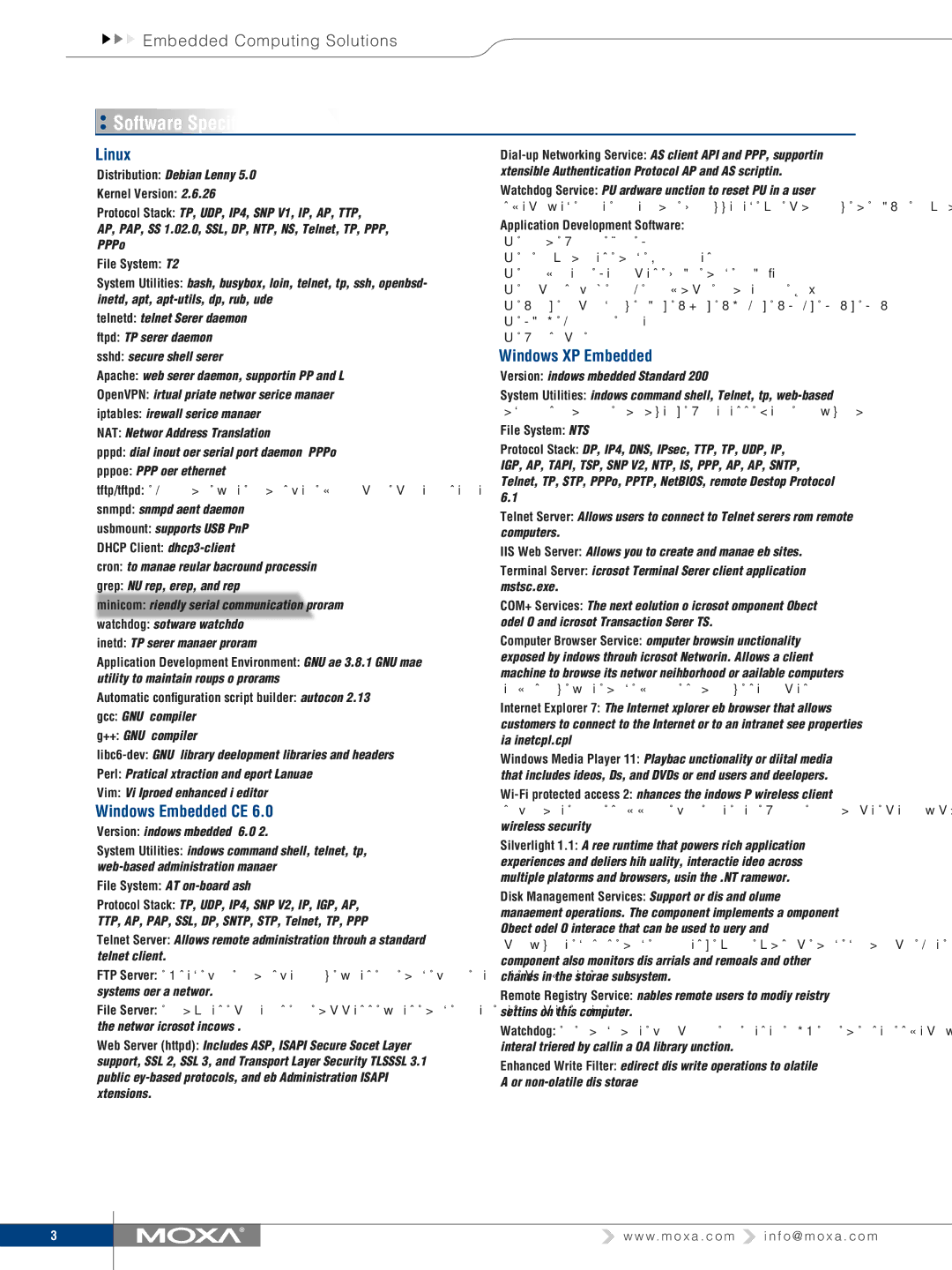V2101 specifications
Moxa Technologies V2101 is a cutting-edge device designed for industrial networking applications, offering advanced features that enhance connectivity and data transfer in various environments. This versatile solution caters to the demands of industries such as manufacturing, transportation, and energy, where reliable communication is critical for operational efficiency.One of the standout features of the V2101 is its robust design, which adheres to industrial-grade standards, ensuring durability in harsh conditions. The device is built to withstand extreme temperatures, humidity, and vibrations, making it suitable for deployment in challenging environments. This resilience is complemented by a compact form factor, enabling seamless integration into existing systems without requiring significant space.
The V2101 is equipped with multiple network interfaces, allowing it to connect a variety of devices and systems effortlessly. Its Ethernet ports support both standard and PoE (Power over Ethernet) configurations, simplifying the power and data connection for networked devices. This flexibility is particularly beneficial for installations where cabling options are limited, and it contributes to overall cost savings in infrastructure.
In terms of technology, the V2101 incorporates state-of-the-art security protocols to safeguard data integrity. With built-in firewall capabilities and support for Virtual Private Networks (VPNs), it provides a secure channel for communication, ensuring that sensitive information remains protected from unauthorized access. This is particularly important in industries where data breaches can lead to significant financial and operational repercussions.
Another key characteristic of the V2101 is its user-friendly interface, which facilitates easy configuration and monitoring. The device supports various management protocols, including SNMP, allowing for real-time status updates and remote management capabilities. This feature enables operators to maintain a high level of operational oversight without the need for physical presence, streamlining maintenance processes and enhancing overall productivity.
Additionally, Moxa Technologies has designed the V2101 for scalability, meaning it can be integrated into both small-scale networks and larger, more complex systems. Its modular architecture allows for future upgrades, ensuring that it remains relevant and capable of meeting evolving technological needs.
Overall, the Moxa Technologies V2101 stands out as a reliable and versatile solution for industrial communications, thanks to its robust design, advanced security features, and ease of integration. As industries increasingly rely on connected devices, the V2101 plays a crucial role in enabling seamless and secure communication across diverse applications.

